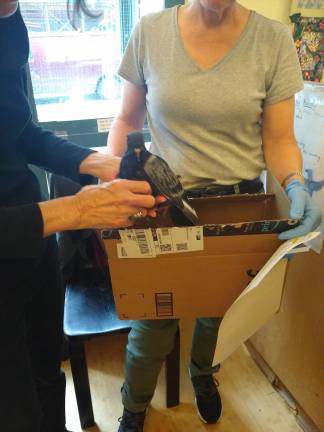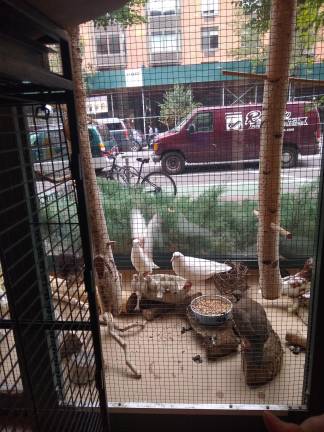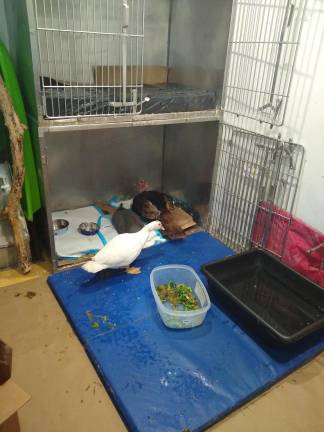Window Strikes Are Killing NYC’s Birds
A bill before the City Council would require that “bird-friendly” glass be used in new construction



New York City’s famed buildings are killing her birds; the Wild Bird Fund is trying to change that.
Rita McMahon is the founder of the Fund, a bird rehabilitation center on the Upper West Side that treats birds from all five boroughs for injuries. They see everything, from broken wings and smashed bones to lead poisoning. But it’s collisions with the city’s glass-clad high rises that are the most lethal.
“From the window strikes, only a third [of the birds brought in] will make it,” McMahon said.
Earlier this month, the City Council debated a proposed bill, which was introduced by a group of council members, among them Rafael Espinal, Speaker Corey Johnson, and Helen Rosenthal. Originally proposed in March, the bill would require buildings that are either installing new glass or replacing old glass to use special ‘bird-friendly’ glass that has been shown to reduce bird fatalities.
Bird-Saving Technology
What makes glass bird-friendly? McMahon explained that the glass the birds are hitting is either totally transparent, or completely reflective. But glass can be treated so that birds can clearly see that it’s glass, and avoid smashing into it. Should the bill pass, New York would join other major cities in encouraging bird-friendly legislation.
Statistics from the City Council committee report confirm that New York is a dangerous place to be a flight bird: “An estimated 90,000 to 230,000 birds die as a result of these collisions.” McMahon said the prime danger to birds is actually the first three stories of a building. “If they’re foraging, getting things from a park, [then] they’ll take off, and hit the lower windows,” she explained. “They most frequently hit somewhere up to 75 feet, but plenty hit higher as well.” She added, “It’s devastating. Smashing into glass is devastating.”
McMahon said that there are a few buildings that stand out for their bird fatality numbers. The buildings around Bryant Park, for example, are deadly. “In one week,” she said, “we had an owl and a red tailed hawk smash into [a] building [in that area].” Representatives of New York City Audubon patrol the sidewalks there between 4 and 6 a.m. as part of their Project Safe Flight. The goals of this initiative are twofold: to direct the public’s attention to the dangers facing the City’s birds, and to provide resources to help them.
The “bird bill” is supported by a number of council members, including Helen Rosenthal. A City Council spokesperson told Straus News that the bill “continues to go through the legislative process.” At the time of publication, no date had been set for a final vote.
The American Institute of Architects (AIA), a professional association representing New York City’s architects and related professionals, supports the bill. In an email, Adam Roberts, AIA director of policy, said “One of the best aspects of this bill is that it provides flexibility to architects, owners, and building managers to use a variety of materials and techniques to deter bird collisions.”
A Good Example
Roberts pointed to the Javits Convention Center, which opened in 1986, as an example of what can be done, even in older buildings. In 2015, Javits leadership adopted a revolutionary sustainability policy; one of the things they did was “install fritted glass in order to... limit bird collisions.” The result was an estimated 90% reduction in bird deaths. “At the Javits Center, you can’t even see it [the treatment in the windows] – but the birds see it,” McMahon said. NYC Audubon honored them for it.
The Real Estate Board of New York (REBNY) has expressed support for the bill, but noted that, since the treatment is a recent innovation in glass production, the materials are costly and can be difficult to get.
McMahon said people need to contact their council members and tell them to pass the bill. “The winds are shifting. And that’s a good thing,” she said. “We have a pride about New York. We want to be outstanding; this will make us more outstanding.”